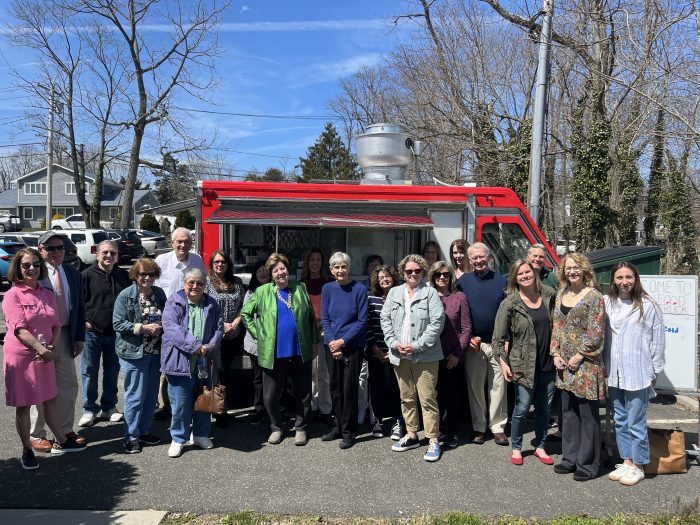By Samantha Rutt
The skies above treated Long Island residents to a mesmerizing display as a partial solar eclipse captivated onlookers on Monday, April 8. With eager eyes turned skyward at its peak around 3:30 p.m., many marveled at the four-minute celestial phenomenon, a sight last seen in 2017.
A solar eclipse occurs when the moon passes between the sun and the Earth, casting its shadow on our planet. On April 8, North Americans from Texas to Maine had the opportunity to witness the infrequent event, as the moon partially obscured the face of the sun, creating a spectacle for those lucky enough to catch a glimpse.
For many, witnessing a solar eclipse serves as a reminder of the wonders of the universe and our place within it.
Where were you during the eclipse?
At TBR News Media’s East Setauket offices, staff gathered together in the parking lot to catch a glimpse of the moon in front of the sun. Some wore specialized solar viewing glasses — that met the ISO 12312-2 international safety standard — while others relied on alternative methods like pinhole projectors or indirect viewing methods used to observe the eclipse safely.
At Stony Brook University, students gathered in masses on the Staller steps and across campus equipped with eclipse glasses to view the event.
In Port Jefferson village, locals were seen having set picnic arrangements in Harborfront Park. In Three Village, people flocked to the shoreline, completely crowding West Meadow and Stony Brook beaches.
While some gathered in droves outdoors, others keyed into the television streams as CBS News and NASA, among other platforms, live streamed the event.
The last solar eclipse visible from Long Island occurred on Aug. 21, 2017, when a total solar eclipse swept across the United States.
While Monday’s eclipse was a partial one in our area and a total eclipse in other parts of the United States, it still captured the imagination of many and provided a unique opportunity for residents. Communities came together to share in the wonder of the celestial show — from backyard gatherings to organized viewing events like those offered at various Suffolk County parks — as residents of all ages savored the experience.
Looking ahead, Long Islanders can mark their calendars for the next solar eclipse visible from our region as New York is not expected to be in another path of totality until 2079.
As this year’s eclipse drew to a close, the memories of the solar event will linger in the minds of our communities. Later, I wondered how the Native Americans who lived on Long Island centuries ago experienced a total eclipse.






















